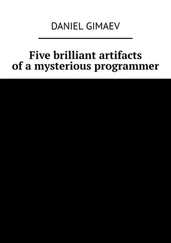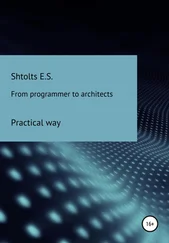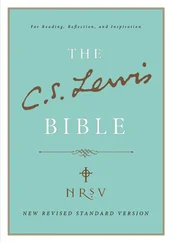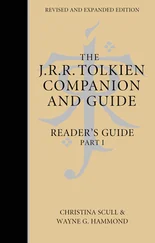Standard Template Library Programmer's Guide
Здесь есть возможность читать онлайн «Standard Template Library Programmer's Guide» весь текст электронной книги совершенно бесплатно (целиком полную версию без сокращений). В некоторых случаях можно слушать аудио, скачать через торрент в формате fb2 и присутствует краткое содержание. Жанр: Программирование, Справочники, на английском языке. Описание произведения, (предисловие) а так же отзывы посетителей доступны на портале библиотеки ЛибКат.
- Название:Standard Template Library Programmer's Guide
- Автор:
- Жанр:
- Год:неизвестен
- ISBN:нет данных
- Рейтинг книги:4 / 5. Голосов: 1
-
Избранное:Добавить в избранное
- Отзывы:
-
Ваша оценка:
- 80
- 1
- 2
- 3
- 4
- 5
Standard Template Library Programmer's Guide: краткое содержание, описание и аннотация
Предлагаем к чтению аннотацию, описание, краткое содержание или предисловие (зависит от того, что написал сам автор книги «Standard Template Library Programmer's Guide»). Если вы не нашли необходимую информацию о книге — напишите в комментариях, мы постараемся отыскать её.
Standard Template Library Programmer's Guide — читать онлайн бесплатно полную книгу (весь текст) целиком
Ниже представлен текст книги, разбитый по страницам. Система сохранения места последней прочитанной страницы, позволяет с удобством читать онлайн бесплатно книгу «Standard Template Library Programmer's Guide», без необходимости каждый раз заново искать на чём Вы остановились. Поставьте закладку, и сможете в любой момент перейти на страницу, на которой закончили чтение.
Интервал:
Закладка:
Let's consider now why C is a great language. It is commonly believed that C is a hack which was successful because Unix was written in it. I disagree. Over a long period of time computer architectures evolved, not because of some clever people figuring how to evolve architectures---as a matter of fact, clever people were pushing tagged architectures during that period of time---but because of the demands of different programmers to solve real problems. Computers that were able to deal just with numbers evolved into computers with byte-addressable memory, flat address spaces, and pointers. This was a natural evolution reflecting the growing set of problems that people were solving. C, reflecting the genius of Dennis Ritchie, provided a minimal model of the computer that had evolved over 30 years. C was not a quick hack. As computers evolved to handle all kinds of problems, C, being the minimal model of such a computer, became a very powerful language to solve all kinds of problems in different domains very effectively. This is the secret of C's portability: it is the best representation of an abstract computer that we have. Of course, the abstraction is done over the set of real computers, not some imaginary computational devices. Moreover, people could understand the machine model behind C. It is much easier for an average engineer to understand the machine model behind C than the machine model behind Ada or even Scheme. C succeeded because it was doing the right thing, not because of AT&T promoting it or Unix being written with it.
C++ is successful because instead of trying to come up with some machine model invented by just contemplating one's navel, Bjarne started with C and tried to evolve C further, allowing more general programming techniques but within the framework of this machine model. The machine model of C is very simple. You have the memory where things reside. You have pointers to the consecutive elements of the memory. It's very easy to understand. C++ keeps this model, but makes things that reside in the memory more extensive than in the C machine, because C has a limited set of data types. It has structures that allow a sort of an extensible type system, but it does not allow you to define operations on structures. This limits the extensibility of the type system. C++ moved C's machine model much further toward a truly extensible type system.
In 1988 I moved to HP Labs where I was hired to work on generic libraries. For several years, instead of doing that I worked on disk drives, which was exciting but was totally orthogonal to this area of research. I returned to generic library development in 1992 when Bill Worley, who was my lab director established an algorithms project with me being its manager. C++ had templates by then. I discovered that Bjarne had done a marvelous job at designing templates. I had participated in several discussions early on at Bell Labs about designing templates and argued rather violently with Bjarne that he should make C++ templates as close to Ada generics as possible. I think that I argued so violently that he decided against that. I realized the importance of having template functions in C++ and not just template classes, as some people believed. I thought, however, that template functions should work like Ada generics, that is, that they should be explicitly instantiated. Bjarne did not listen to me and he designed a template function mechanism where templates are instantiated implicitly using an overloading mechanism. This particular technique became crucial for my work because I discovered that it allowed me to do many things that were not possible in Ada. I view this particular design by Bjarne as a marvelous piece of work and I'm very happy that he didn't follow my advice.
When did you first conceive of the STL and what was its original purpose?
In 1992, when the project was formed, there were eight people in it. Gradually the group diminished, eventually becoming two people, me and Meng Lee. While Meng was new to the area---she was doing compilers for most of her professional life---she accepted the overall vision of generic programming research, and believed that it could lead to changing software development at the point when very few people shared this belief. I do not think that I would be able to build STL without her help. (After all, STL stands for Stepanov and Lee...) We wrote a huge library, a lot of code with a lot of data structures and algorithms, function objects, adaptors, and so on. There was a lot of code, but no documentation. Our work was viewed as a research project with the goal of demonstrating that you can have algorithms defined as generically as possible and still extremely efficient. We spent a lot of time taking measurements, and we found that we can make these algorithms as generic as they can be, and still be as efficient as hand-written code. There is no performance penalty for this style of programming! The library was growing, but it wasn't clear where it was heading as a project. It took several fortunate events to lead it toward STL.
When and why did you decide to propose STL as part of the ANSI/ISO Standard C++ definition?
During the summer of 1993, Andy Koenig came to teach a C++ course at Stanford. I showed him some of our stuff, and I think he was genuinely excited about it. He arranged an invitation for me to give a talk at the November meeting of the ANSI/ISO C++ Standards Committee in San Jose. I gave a talk entitled "The Science of C++ Programming." The talk was rather theoretical. The main point was that there are fundamental laws connecting basic operations on elements of C++ which have to be obeyed. I showed a set of laws that connect very primitive operations such as constructors, assignment, and equality. C++ as a language does not impose any constraints. You can define your equality operator to do multiplication. But equality should be equality, and it should be a reflexive operation. A should be equal to A. It should be symmetric. If A is equal to B, then B should be equal to A. And it should be transitive. Standard mathematical axioms. Equality is essential for other operations. There are axioms that connect constructors and equality. If you construct an object with a copy constructor out of another object, the two objects should be equal. C++ does not mandate this, but this is one of the fundamental laws that we must obey. Assignment has to create equal objects. So I presented a bunch of axioms that connected these basic operations. I talked a little bit about axioms of iterators and showed some of the generic algorithms working on iterators. It was a two-hour talk and, I thought, rather dry. However, it was very well received. I didn't think at that time about using this thing as a part of the standard because it was commonly perceived that this was some kind of advanced programming technique which would not be used in the "real world". I thought there was no interest at all in any of this work by practical people.
I gave this talk in November, and I didn't think about ANSI at all until January. On January 6 I got a mail message from Andy Koenig, who is the project editor of the standard document, saying that if I wanted to make my library a part of the standard, I should submit a proposal by January 25. My answer was, "Andy, are you crazy?" to which he answered, "Well, yes I am crazy, but why not try it?"
At that point there was a lot of code but there was no documentation, much less a formal proposal. Meng and I spent 80-hour weeks to come up with a proposal in time for the mailing deadline. During that time the only person who knew it was coming was Andy. He was the only supporter and he did help a lot during this period. We sent the proposal out, and waited. While doing the proposal we defined a lot of things. When you write things down, especially when you propose them as a standard, you discover all kinds of flaws with your design. We had to re-implement every single piece of code in the library, several hundred components, between the January mailing and the next meeting in March in San Diego. Then we had to revise the proposal, because while writing the code, we discovered many flaws.
Читать дальшеИнтервал:
Закладка:
Похожие книги на «Standard Template Library Programmer's Guide»
Представляем Вашему вниманию похожие книги на «Standard Template Library Programmer's Guide» списком для выбора. Мы отобрали схожую по названию и смыслу литературу в надежде предоставить читателям больше вариантов отыскать новые, интересные, ещё непрочитанные произведения.
Обсуждение, отзывы о книге «Standard Template Library Programmer's Guide» и просто собственные мнения читателей. Оставьте ваши комментарии, напишите, что Вы думаете о произведении, его смысле или главных героях. Укажите что конкретно понравилось, а что нет, и почему Вы так считаете.











